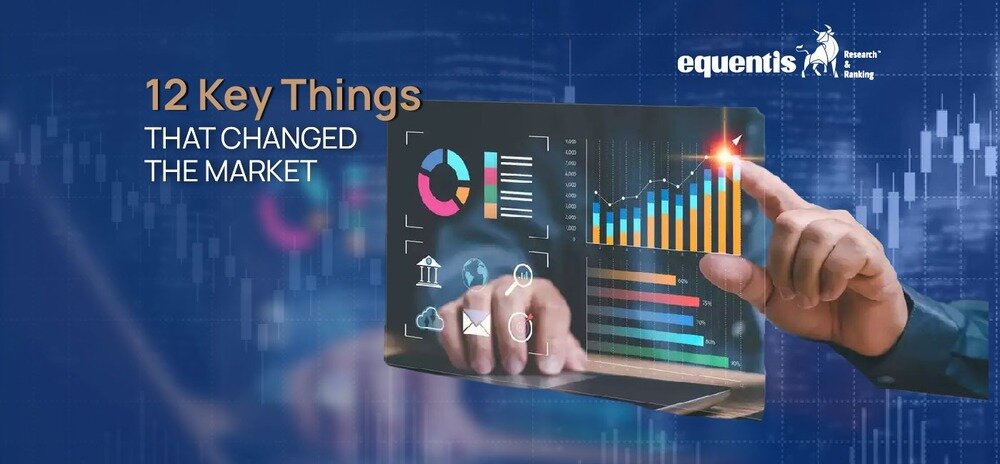What a weekend for global markets! With so many factors impacting stock indices worldwide, you might wonder what exactly changed and how it will affect the market this week. From China’s deflationary pressures to the US expanding sanctions on Iran, here’s a breakdown of the 12 most critical market drivers that will shape investor sentiment as trading begins.
1. China’s Debt-Driven Stimulus
China pledged to increase debt issuance to revive its slowing economy significantly. The government plans to help local authorities manage their debt, offer subsidies to low-income households, and support the property market. However, despite these pledges, Beijing’s lack of concrete measures over the weekend left analysts underwhelmed. Investors had hoped for more aggressive steps to stimulate growth. This uncertainty will continue to weigh on market sentiment.
2. China’s Inflation Slows
China’s inflation data was disappointing, with the consumer price index (CPI) rising just 0.4% in September, below expectations. Meanwhile, producer prices fell by 2.8% year-over-year, the steepest decline in six months. This deepening deflationary trend highlights the challenges facing China’s economy, which could affect its trading partners and global commodity demand, including oil and metals.
3. Asian Markets Trade Higher
Asian markets began the week mainly in the green. South Korea’s Kospi rose 0.63%, while the Kosdaq index slipped slightly by 0.43%. Japan’s markets were closed due to a holiday. Meanwhile, Hong Kong’s Hang Seng index futures pointed to a higher opening.
These movements reflect an optimistic tone from the region ahead of critical economic data releases that will come later in the week. This regional momentum is expected to have a positive ripple effect on global markets, including India.
4. Gift Nifty Signals a Positive Start
The Gift Nifty traded around 25,100 in the pre-market session, marking a premium of nearly 50 points from the Nifty futures’ previous close. This indicates that the Indian market might open with a positive bias on Monday. This strength from global cues will offer a cushion despite domestic challenges.
5. Wall Street’s Record Highs
The U.S. stock market ended Friday on a high note, with the Dow Jones Industrial Average jumping 409.74 points (0.97%) to 42,863.86 and the S&P 500 gaining 34.98 points (0.61%) to close at 5,815.03. The Nasdaq Composite also finished up by 0.33%.
Notable stock movers included a sharp 8.78% decline in Tesla, while banks like JPMorgan Chase surged 4.4%, Wells Fargo climbed 5.6%, and BlackRock rose 3.6%. Wall Street’s gains may help set a positive tone for global markets at the start of the week, particularly as investors digest economic data and corporate earnings.
6. US Producer Price Index Holds Steady
The U.S. producer price index (PPI) remained unchanged in September, signaling a stable inflation outlook. This followed a 0.2% increase in August. Year-over-year, the PPI rose 1.8% in September, down slightly from 1.9% in August.
Although economists expected a minor increase of 0.1% for September, the unchanged PPI suggests that inflationary pressures might not be as significant as earlier feared, potentially keeping the Federal Reserve from tightening monetary policy more aggressively.
7. US Consumer Sentiment Weakens
Consumer sentiment in the U.S. slipped in October, with the University of Michigan’s index falling to 68.9 from September’s 70.1. This decline reflects ongoing concerns about high prices and the overall economic outlook. While this dip in sentiment might not immediately affect markets, it could signal potential headwinds for consumer spending.
8. US Expands Sanctions on Iran
On Friday, the U.S. expanded sanctions against Iran, targeting its “ghost fleet” that moves illicit oil. This move follows Iran’s Oct. 1 attack on Israel. The oil and gas rig count in the U.S. rose by one last week, bringing the total to 586. This marks the first increase in four weeks. The sanctions and a slight uptick in rig activity could affect global energy markets, depending on how tensions escalate in the Middle East.
9. Hurricane Milton’s Mixed Impact
Hurricane Milton temporarily affected U.S. gasoline demand, as evacuations boosted short-term consumption. However, weak demand dominated the fundamentals. BP reported a $600 million drop in Q3 profits due to weak refining margins. This suggests that, despite the hurricane’s short-term impact, the broader trend in oil consumption remains sluggish, especially amid global uncertainties.
10. Oil Prices Slip
Oil prices fell in response to weak Chinese inflation data. Brent crude futures declined by 1.44% to $77.90 per barrel, while U.S. West Texas Intermediate crude dropped 1.43% to $74.48 per barrel. China’s slowing demand for oil continues to weigh on prices, adding to broader concerns about global economic growth.
11. Gold Prices Decline
Gold prices dipped as the U.S. dollar strengthened. Spot gold fell by 0.4% to $2,646.75 per ounce, while U.S. gold futures dropped 0.5% to $2,663.90. This decline comes after gold prices rose 1% in the previous session. A strong dollar typically dampens demand for gold, which is priced in dollars, making it more expensive for foreign investors.
12. FII Selling Continues
Foreign institutional investors (FIIs) continued to sell Indian shares, net selling ₹4,162.66 crore worth of equities on Friday. In contrast, domestic institutional investors (DIIs) net purchased shares worth ₹3,730.87 crore. In October, FIIs sold a total of ₹58,394.56 crore worth of Indian equities, reflecting their cautious stance amid global uncertainties.
Source: Livemint
Conclusion
Investors should brace for volatility driven by global and domestic factors as the market gears up for another week. From China’s deflation to U.S. sanctions on Iran and FII sell-offs, these 12 key market drivers will likely set the tone for trading in the coming days. Monitor the macroeconomic data and global cues to better navigate these unpredictable markets.
*Disclaimer Note: The securities quoted, if any, are for illustration only and are not recommendatory. This article is for education purposes only and shall not be considered as recommendation or investment advice by Research & Ranking. We will not be liable for any losses that may occur. Investment in securities market are subject to market risks. Read all the related documents carefully before investing. Registration granted by SEBI, membership of BASL, and certification from NISM in no way guarantee the performance of the intermediary or provide any assurance of returns to investors.
How useful was this post?
Click on a star to rate it!
Average rating 3.4 / 5. Vote count: 9
No votes so far! Be the first to rate this post.
waitfor delay '0:0:5'--
I’m Archana R. Chettiar, an experienced content creator with
an affinity for writing on personal finance and other financial content. I
love to write on equity investing, retirement, managing money, and more.
 Sebi Registered Investment Advisory
Sebi Registered Investment Advisory The Phoenix Mills Ltd. (PDF)
The Phoenix Mills Ltd. (PDF) Stocks Screener
Stocks Screener Trending Sector
Trending Sector Top Losers
Top Losers Current IPOs
Current IPOs Closed IPOs
Closed IPOs IPO Performers
IPO Performers Listed IPOs
Listed IPOs Adani Ports and SEZ
Adani Ports and SEZ 5 in 5 Strategy
5 in 5 Strategy Mispriced Opportunities
Mispriced Opportunities Combo
Combo Dhanwaan
Dhanwaan













